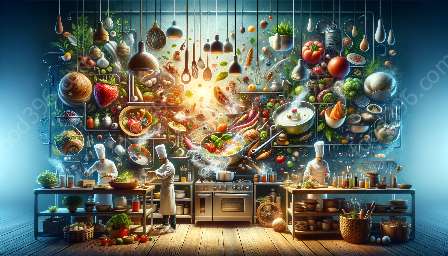Food and beverage purchasing is a critical aspect of the culinary arts and food service management. It involves the acquisition of ingredients, beverages, and supplies necessary for cooking, serving, and managing the food and beverage operation.
Under the umbrella of culinary arts, food and beverage purchasing plays a vital role in ensuring the quality, availability, and cost-effectiveness of ingredients and products essential for creating exceptional culinary experiences. Whether in a restaurant, hotel, catering business, or any other food service establishment, understanding the intricacies of purchasing food and beverages is essential for success.
The Fundamentals of Food and Beverage Purchasing
Effective food and beverage purchasing is built on a solid foundation of knowledge and skills. It encompasses a range of activities, including identifying suppliers, negotiating contracts, managing inventory, and ensuring compliance with regulatory standards. Additionally, it involves understanding market trends, product specifications, and the nuances of pricing and delivery logistics.
Supplier Relationships and Negotiation
In the context of culinary arts and food service management, establishing strong relationships with suppliers is paramount. Chefs and food service managers need to cultivate partnerships with reliable vendors who can provide high-quality ingredients and products. Negotiating favorable terms, such as pricing, payment terms, and delivery schedules, is essential for maintaining a sustainable supply chain while meeting financial goals.
Quality and Consistency
For culinary professionals, maintaining the quality and consistency of ingredients and beverages is non-negotiable. This involves conducting thorough evaluations of suppliers, inspecting incoming shipments, and implementing stringent quality control measures. By ensuring that the products meet the required standards, chefs and managers can uphold the integrity of their culinary creations and provide a consistent dining experience for customers.
Best Practices in Food and Beverage Purchasing
Embracing best practices in food and beverage purchasing is imperative for achieving operational excellence and maximizing cost efficiency. This includes strategies such as conducting thorough market research, leveraging technology for procurement processes, and optimizing inventory management to minimize waste and overstocking.
Strategic Sourcing and Procurement
Culinary professionals can benefit from adopting strategic sourcing and procurement practices that involve exploring various suppliers, comparing offerings, and selecting the most suitable partners based on factors such as quality, reliability, and cost. By diversifying the vendor base and strategically procuring products, food service establishments can mitigate risks associated with supply chain disruptions and fluctuations in prices.
Menu Engineering and Cost Control
Menu engineering is an integral part of food and beverage purchasing, particularly in the context of culinary arts. Chefs and food service managers analyze the composition of menus, the cost of ingredients, and the pricing of dishes to optimize profitability while maintaining culinary standards. By balancing the creation of innovative, appealing dishes with cost-effective procurement, they can enhance the financial performance of the establishment without compromising on culinary creativity.
Real-World Applications and Case Studies
To contextualize the concepts of food and beverage purchasing in the realm of culinary arts and food service management, real-world applications and case studies provide valuable insights. Analyzing successful procurement strategies, supply chain innovations, and creative approaches to ingredient sourcing can offer inspiration and practical guidance for culinary professionals.
Case Study: Sustainable Sourcing in Culinary Arts
A renowned restaurant chain recognized for its commitment to sustainability and culinary excellence implemented a comprehensive sustainable sourcing program. By partnering with local farmers and artisanal producers, the restaurant secured a consistent supply of high-quality, ethically sourced ingredients. This not only aligned with the culinary ethos of the establishment but also resonated with environmentally conscious customers, enhancing the brand's reputation and customer loyalty.
Case Study: Procurement Optimization in Hospitality
An upscale hotel leveraged data analytics and technology to optimize its procurement processes. By analyzing purchasing patterns, demand forecasts, and supplier performance, the hotel's food and beverage team streamlined their procurement operations, reduced costs, and minimized food waste. This translated to improved profitability and operational efficiency while ensuring the delivery of exceptional culinary experiences to guests.
Conclusion
Food and beverage purchasing holds immense significance in the multifaceted domain of culinary arts and food service management. By delving into the fundamentals, embracing best practices, and drawing inspiration from real-world applications, culinary professionals can elevate their expertise, enhance the quality of culinary offerings, and achieve sustainable success in the dynamic world of food and beverage industries.
}}}}
